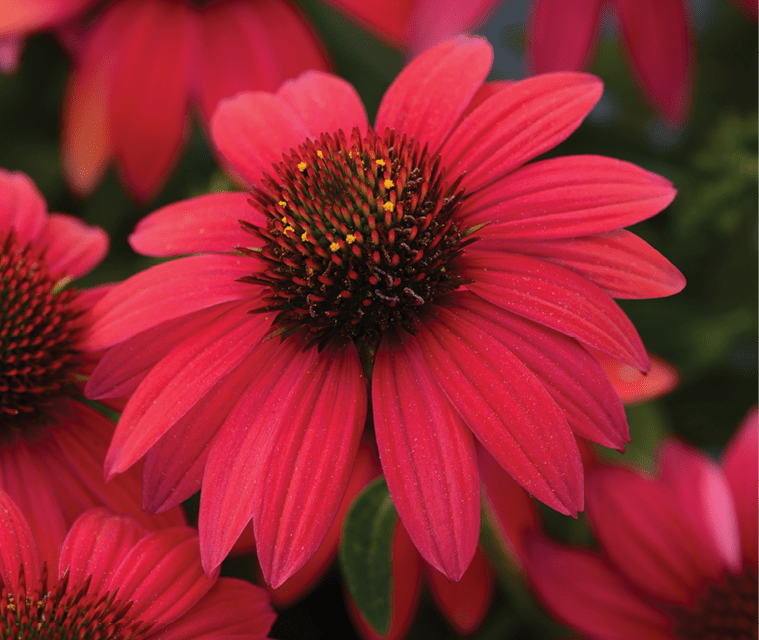Photo courtesy of Ball Horticultural Tare consumers are turning to perennials, and there’s a few reason why. For one, they’re seeing greater value and flower longevity in the garden. And the economics of investing less time and effort is making more sense to today’s busy gardener. Leading breeding companies have responded to these customer needs by upgrading several classes of perennial plants, namely echinacea, salvia and coreopsis. “Customers want a colorful show in their garden,” says Karl Batschke, perennial product development manager at Ball. “In short, they want perennials that flower like annuals. That means taking a plant that traditionally flowers for a few weeks and turning it into a plant that flowers for a few months.” Modern genetics have made echinacea available in colors like orange and red. Perennial Improvements An explosion of new perennial development began in the early 2000s. Breeding work elevated the color palette of echinacea, and the addition of other key characteristics helped people see the possibilities. It was those possibilities that led to the launch of the Sombrero series from Darwin Perennials in 2009. Perennial growers considering adding echinacea Sombrero are likely familiar with the 72-cell tray size. That familiarity should help make the transition to growing it easier, says Karl Batschke, perennial product development manager at Ball Horticultural. “When Sombrero came on the market, not only were we able to fix preexisting echinacea problems of flower longevity, branching and winter hardiness, but we also enhanced the tissue culture process and made it producible for reliable market supply,” Batschke says. “We put all the pieces together.” Six echinacea spring production tips from Karl Batschke Start the plants at moderate soil temperatures for the first 3 to 4 weeks. We recommend minimum night temperatures of 62° F for best establishment. Starting colder will cause slow rooting and inhibit lateral shoot development. Use long-day lighting when starting prior to Week 8. This will ensure that the plants continue active growth. Don’t plant too deep. Keep main growing points above the soil level. Remove premature buds that develop within four weeks of transplant. This can be […]






